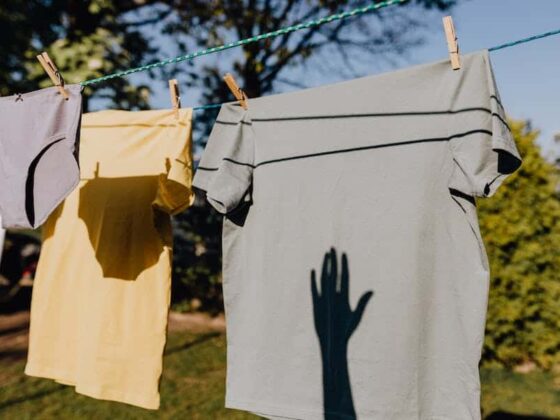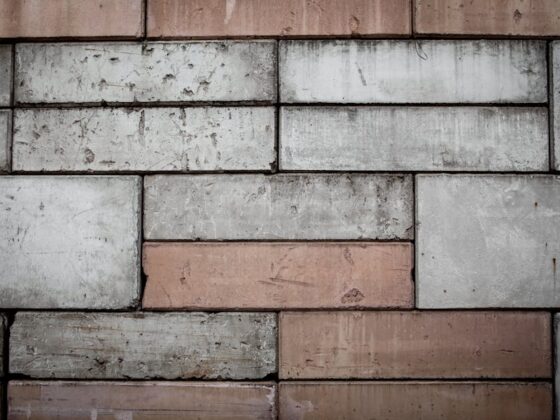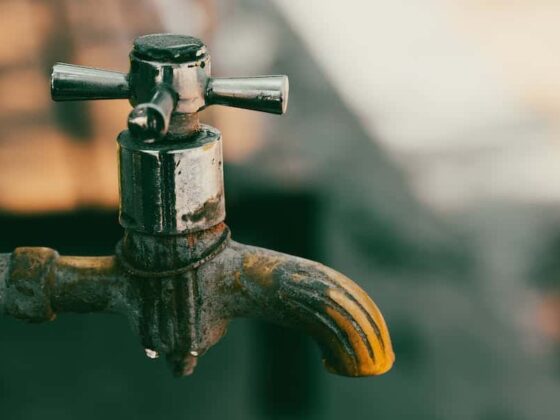Lamination is a popular method for protecting and enhancing various documents, photos, and materials. Traditionally, a laminator machine has been the go-to tool for achieving professional lamination results. However, investing in a laminator may not be practical or affordable for everyone. The good news is that you can still achieve excellent lamination without a laminator, using simple and cost-effective alternatives. In this article, we will explore different methods and techniques for laminating without a laminator, allowing you to preserve and safeguard your important items without breaking the bank. Whether you need to protect your documents at home, school, or the office, these DIY lamination methods will be your handy guide.
How To Laminate Without A Laminator?
Method 1: Using Self-Adhesive Laminating Sheets
- Prepare the item for lamination: Ensure that the item is clean and free from dust or debris. Trim any excess paper or uneven edges if necessary.
- Peel the backing of the laminating sheet: Take a self-adhesive laminating sheet and peel off the backing to expose the adhesive side.
- Position and apply the laminating sheet: Carefully place the item on the sticky side of the laminating sheet, aligning it properly. Press the item firmly onto the adhesive side, smoothing out any air bubbles or wrinkles as you go.
- Seal and trim the laminated item: Once the item is securely attached to the laminating sheet, fold over the excess sheet onto the backside. Use scissors or a paper trimmer to trim off the excess laminating sheet, leaving a small border around the item.
Method 2: DIY Lamination with an Iron
- Prepare the item for lamination: Clean the item to remove any dirt or dust. Trim any excess paper or uneven edges if necessary.
- Place the item in a heat-resistant pouch: Insert the item into a heat-resistant laminating pouch, ensuring it fits properly.
- Apply heat with an iron: Set your iron to a low or medium heat setting without steam. Gently run the iron over the laminating pouch, applying even pressure and moving in slow, circular motions. Be cautious not to linger too long in one spot to avoid overheating or melting the pouch.
- Allow the laminated item to cool and trim: After applying heat, set the laminated item aside to cool for a few minutes. Once cooled, use scissors or a paper trimmer to trim off the excess laminating pouch, leaving a small border around the item.
The Advantages And Applications Of Laminated Items
Laminated items offer numerous advantages that make them popular in various applications. Firstly, laminating provides durability and protection against wear and tear. The laminating process encloses the item within a protective layer, shielding it from moisture, stains, and fading caused by exposure to sunlight. This makes laminated items ideal for preserving important documents, photographs, and artwork, ensuring they remain in pristine condition for a longer time. Additionally, laminated items are more resistant to tearing, bending, and creasing, making them suitable for frequent handling and use in high-traffic environments.
Another significant advantage of laminated items is their enhanced visual appeal. The lamination process gives items a glossy finish, adding a professional touch and making them visually appealing. Lamination can enhance the colors and details of photographs, making them more vibrant and sharp. This is particularly useful in displays, presentations, or educational materials where visual impact is important. Laminated items also have a smooth surface, which makes them easier to clean and maintain. Any dirt or spills can be wiped away without damaging the underlying material, ensuring the longevity of the laminated item.
The applications of laminated items are diverse and wide-ranging. In educational settings, laminated materials such as flashcards, charts, and classroom posters are commonly used. Laminated documents and certificates find applications in offices and businesses where durability and professionalism are valued. Laminated identification cards, badges, and membership cards are used in various organizations for easy identification and long-term use. Additionally, laminated items are extensively used in the hospitality industry for menus, signage, and promotional materials. Moreover, laminated items are popular in arts and crafts, allowing artists and hobbyists to create unique and long-lasting projects.
Tips And Tricks For Successful Diy Lamination
- Cleanliness is Key: Before laminating, ensure that the item you want to laminate is clean and free from any dust, dirt, or fingerprints. Use a soft cloth or gentle cleaning solution to wipe away any debris that could interfere with the lamination process.
- Smooth Out Air Bubbles: When applying the laminating sheet or tape, take your time to smooth out any air bubbles or wrinkles that may appear. Start from one end and gradually press down, working your way across the item. You can use a credit card or a ruler to help remove air bubbles and create a smooth finish.
- Avoid Adhesive Residue: If you’re using self-adhesive laminating sheets, be careful not to let the adhesive side come into contact with itself before applying it to your item. This can create a sticky residue that is difficult to remove. Once you peel off the backing, handle the sheet with care.
- Apply Even Pressure: Whether you’re using self-adhesive laminating sheets, packing tape, or an iron, applying even pressure during the lamination process is crucial. This helps to ensure a consistent and professional-looking finish. Use your hands, a ruler, or a flat object to apply even pressure while adhering the laminating material to the item.
- Experiment with Trimming: After laminating, consider experimenting with different trimming techniques to achieve the desired look. You can opt for rounded corners, a straight edge, or even create custom shapes by carefully cutting along the laminated edges. Just be sure to use sharp scissors or a paper trimmer for clean and precise cuts.
- Test with Scrap Paper: If you’re new to a particular DIY lamination method or using a different type of laminating material, it’s a good idea to test it out on a scrap piece of paper first. This allows you to familiarize yourself with the process, gauge the adhesive strength, and make any necessary adjustments before laminating important items.
- Store and Handle with Care: Once your item is laminated, treat it with care to ensure its longevity. Avoid bending, folding, or exposing the laminated item to extreme temperatures or moisture, as these can damage the lamination. Store your laminated items in a protective sleeve, folder, or binder to keep them safe from potential wear and tear.
Creative Applications Of Diy Lamination
Protecting Important Documents: One of the primary uses of lamination is to protect important documents such as certificates, identification cards, and licenses. DIY lamination allows you to safeguard these documents without the need for professional equipment.
- Preserving Memories: Laminating photographs, ticket stubs, or sentimental items can help preserve cherished memories. DIY lamination ensures these keepsakes are protected from damage, fading, and moisture, allowing you to enjoy them for years to come.
- Making Customized Bookmarks: Create personalized and durable bookmarks by laminating photographs, artwork, or decorative paper. This not only adds a touch of personalization but also makes the bookmarks more sturdy and long-lasting.
- Crafting Placemats or Coasters: Laminate decorative paper or fabric to create unique placemats or coasters. This DIY approach not only allows you to customize the design to match your home decor but also provides a protective layer against spills and stains.
- Creating Educational Materials: DIY lamination can be a valuable tool for teachers and parents. Laminate flashcards, worksheets, and learning materials to make them more durable and reusable, enhancing the learning experience for children.
- Designing Customized Bag Tags or Luggage Tags: Make your luggage or bags stand out by creating laminated tags with your name, contact information, or unique designs. DIY laminated tags are not only visually appealing but also provide durability and protection against wear and tear during travel.
- Crafting Personalized ID Badges: Whether for events, conferences, or workplace identification, laminating DIY ID badges adds a professional touch. You can include names, logos, or other relevant information on the badge, ensuring durability and easy identification.
- Enhancing Homemade Labels or Organization: Laminate labels for containers, file folders, or storage boxes to create a neat and organized space. DIY laminated labels are resistant to moisture and can withstand frequent handling, making them ideal for long-term use.
- Creating Customized Game Cards: Design and laminate game cards for board games, flashcards, or educational games. DIY laminated game cards are more durable, ensuring they can withstand repeated use and handling.
- Designing Personalized Wall Art: Laminate decorative artwork or photographs to create unique wall art. The lamination process adds a glossy finish and protection against dust and fading, making your DIY wall art more visually appealing and long-lasting.
Conclusion
In conclusion, laminated items offer a host of advantages and find extensive applications in various fields. With their durability and protection against wear and tear, laminated items can preserve important documents, photographs, and artwork for extended periods. The glossy finish provided by lamination enhances the visual appeal of items, making them more vibrant and professional-looking. From educational materials and identification cards to customized crafts and promotional materials, laminated items serve a wide range of purposes in schools, offices, businesses, and artistic endeavors. By providing longevity, protection, and aesthetic enhancement, laminated items have become a cost-effective and practical solution for safeguarding and enhancing a multitude of materials in diverse contexts.
FAQ’s
Is Laminating Reversible?
No, laminating is not a reversible process. Once an item is laminated, it is permanently sealed within the laminating material. Attempting to remove the lamination may damage the item.
Can Laminated Items Be Written On?
Yes, laminated items can be written on using permanent markers or wet-erase markers. However, it’s important to note that dry-erase markers should not be used on laminated surfaces as they may not easily erase and can leave behind residue.
Can Laminated Items Be Trimmed Or Cut After Lamination?
Yes, laminated items can be trimmed or cut after lamination. Sharp scissors or a paper trimmer can be used to achieve clean and precise cuts. However, it’s important to exercise caution and ensure that the trimming does not damage the laminated item.
Can Laminated Items Be Submerged In Water?
Laminated items are generally water-resistant but not completely waterproof. They can withstand minor exposure to water, such as spills or light moisture. However, prolonged submersion in water or exposure to excessive moisture can cause the laminating material to separate from the item or result in damage.
Can Laminated Items Be Recycled?
Laminated items are typically not recyclable due to the combination of materials used, such as plastic and paper. The lamination process creates a barrier that makes it difficult to separate the laminating material from the item. It’s best to check with local recycling facilities to determine their specific guidelines for laminated items.










